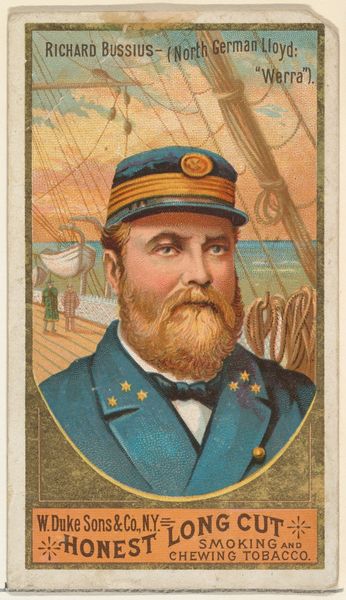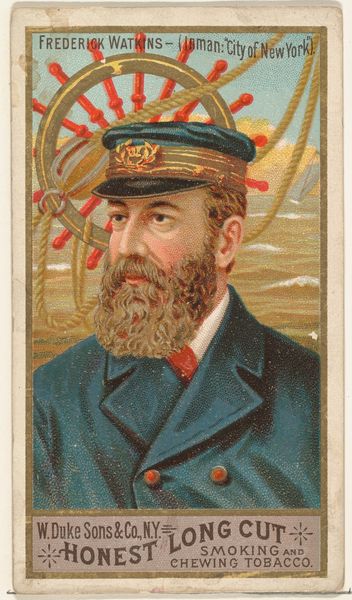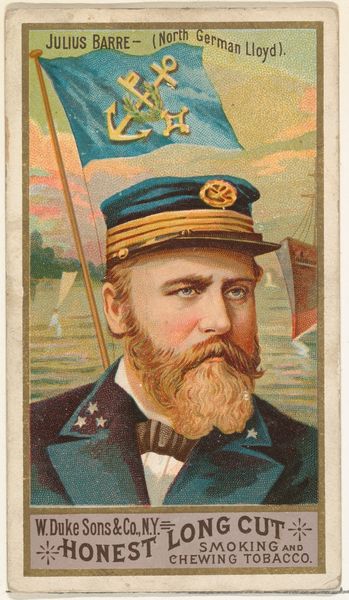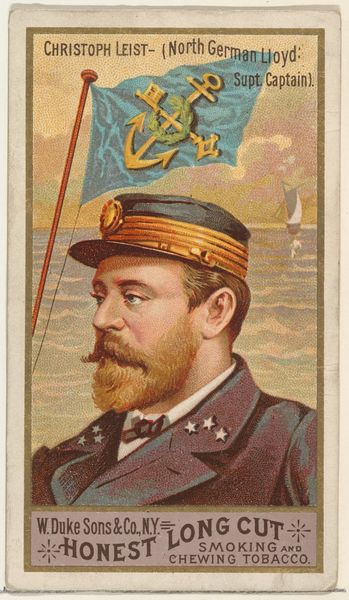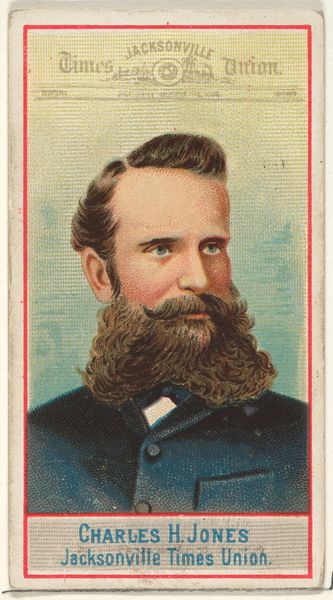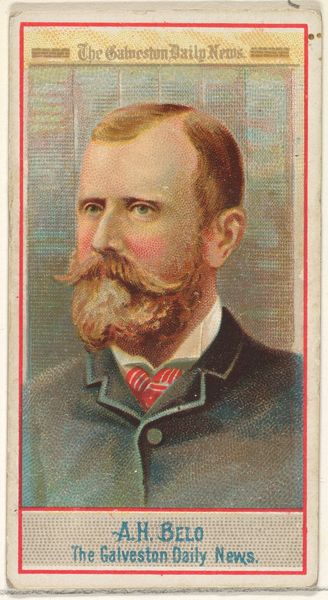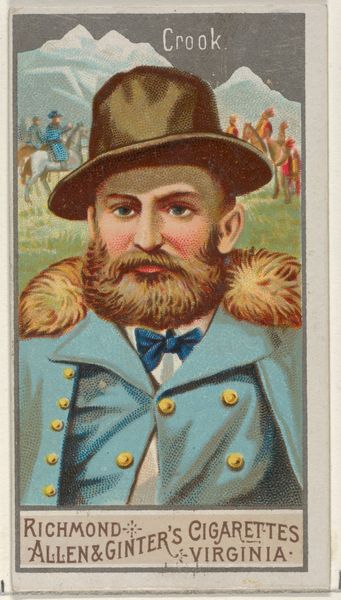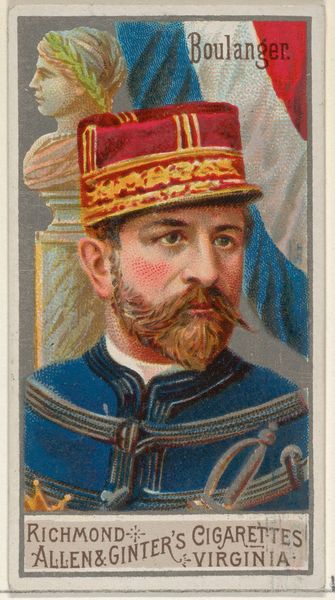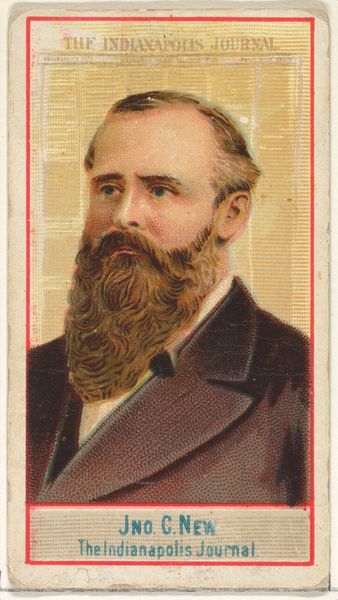
W.G. Randle, from the Sea Captains series (N127) issued by Duke Sons & Co. to promote Honest Long Cut Tobacco 1887
0:00
0:00
drawing, collage, lithograph, print
#
portrait
#
drawing
#
collage
#
lithograph
# print
#
caricature
#
oil painting
Dimensions: Sheet: 4 3/16 × 2 7/16 in. (10.7 × 6.2 cm)
Copyright: Public Domain
Editor: Here we have a lithograph print from 1887, "W.G. Randle, from the Sea Captains series," produced by W. Duke, Sons & Co. as a tobacco advertisement. The subject's direct gaze gives the work an arresting, authoritative feel. What stands out to you? Curator: Well, consider this image not just as a portrait or advertisement but as a cultural artifact reflecting late 19th-century America. This lithograph embodies the intertwined nature of capitalism, imperialism, and constructions of masculinity. Editor: How so? Curator: Think about it: "Honest Long Cut Tobacco." Who is it targeting? The image of a stern sea captain reinforces ideals of rugged individualism, while the commercial aspect ties this masculinity to consumerism and colonial expansion via maritime trade. How does the "Red Star" insignia further complicate its meaning? Editor: It seems a bit out of place, almost like a Communist symbol, yet it’s linked to a capitalist venture… Curator: Exactly! This juxtaposition challenges our simple understanding of symbols. Is it about navigation, national identity, or something else entirely? We also need to critically assess how such representations might exclude or marginalize other identities and histories. Editor: That really broadens my perspective. I was only thinking about the aesthetic qualities, but now I see how deeply embedded it is in cultural power dynamics. Curator: Precisely. Analyzing art like this gives us the tools to understand how societal power structures operate and influence how we see ourselves.
Comments
No comments
Be the first to comment and join the conversation on the ultimate creative platform.

